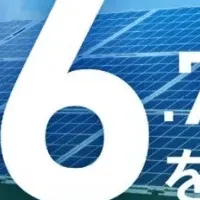
Huawei and SchneiTec Launch World’s First TÜV SÜD-Certified Grid-Forming Energy Storage Project
Introduction
In a groundbreaking development for renewable energy, Huawei Digital Power has successfully launched the world's first TÜV SÜD-certified grid-forming energy storage project in collaboration with SchneiTec. This remarkable achievement marks a pivotal moment for Cambodia as it makes strides towards a sustainable energy future.
Project Overview
The energy storage project, which includes a total capacity of 12MWh, features a testbed of 2MWh. This initiative aims to validate Huawei's Smart String Grid-Forming Energy Storage System (ESS) technology. The newly implemented system has proven its remarkable capability to stabilize the power grid, particularly in off-grid scenarios and weak-grid contexts, by facilitating the seamless integration of intermittent renewable energy sources.
Significance of the Project
Receiving an authoritative certification from TÜV SÜD, this facility represents Cambodia’s first grid-forming ESS installation and lays a robust foundation for future capacity expansion and large-scale development of the energy infrastructure. TÜV SÜD is renowned globally for its rigorous standards in testing and certifying energy technologies. This certification attests to the key technical functionalities of Huawei's Smart String Grid-Forming ESS, which include inertia response, voltage ride-through (high/low), frequency support, and overload performance.
Technical Highlights
The project showcased several critical technological benchmarks, which are noteworthy:
- - Inertia Response: Huawei’s grid-forming technology demonstrated exceptional performance in inertial response, achieving inertia time constants (Tj) within a range of 3-20 seconds, significantly outperforming the standard requirement of 3-12 seconds. This rapid response capability is crucial for stabilizing the grid.
- - Voltage Ride-Through: The system effectively managed voltage fluctuations and maintained grid stability during transient voltage dips and spikes, operating reliably across a voltage range of 5% to 130% of nominal grid voltage.
- - Overload and Frequency Support: The grid-forming ESS operated stably under temporary overload conditions of up to 300%, effectively dampening low-frequency fluctuations ranging from 0.2 Hz to 5 Hz.
- - Black Start Capability: The technology enabled quick black start capability under load, efficiently restoring the power grid following a complete outage.
Independent Verification
This independent validation of Huawei's grid-forming ESS technology signifies the first overseas on-site confirmation of the system in full compliance with international standards, including IEC, China National Standards, the UK Grid Code, and German VDE standards. Obtaining TÜV SÜD certification underscores that Huawei's grid-forming ESS technology meets globally recognized benchmarks for energy management and grid stability.
Future Implications
This accomplishment not only represents a technological milestone for Huawei Digital Power but also paves the way for innovation within the energy sector. The successful collaboration between Huawei Digital Power and SchneiTec highlights a substantial step forward in Cambodia's transition towards renewable energy. As the roadmap for renewable energy in Cambodia progresses, Huawei Digital Power will continue to foster innovation by providing stable, scalable, and reliable solutions to meet the nation’s growing demand for sustainable electricity and support the advancement of energy infrastructure.
Conclusion
The introduction of the world’s first TÜV SÜD-certified grid-forming energy storage project symbolizes a significant breakthrough in renewable energy strategies in Cambodia. It sets a precedent for future projects and showcases the potential of technological innovation in driving the energy transition globally. With Huawei and SchneiTec at the forefront, the future of clean energy looks promising, reinforcing the commitment to environmental sustainability.
Topics Energy)










【About Using Articles】
You can freely use the title and article content by linking to the page where the article is posted.
※ Images cannot be used.
【About Links】
Links are free to use.